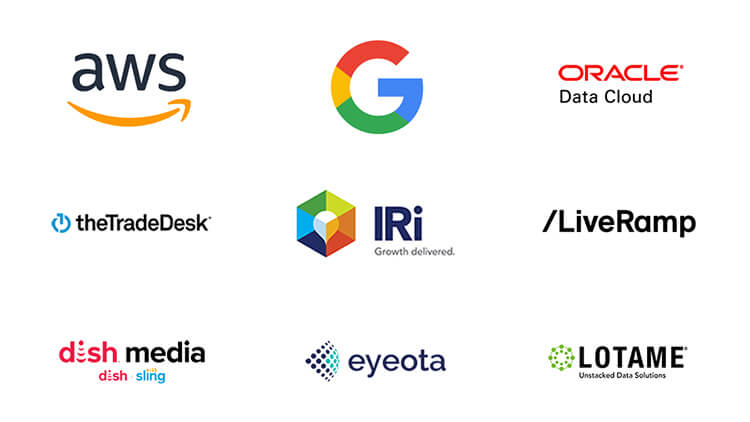Cross-device targeting powers more precise marketing
How cross-device targeting strategies can maximize your marketing campaigns

Cross-device targeting is a strategy that allows marketers to identify and reach the same consumer seamlessly across multiple devices with consistent, engaging messages. Connecting various devices to a single user helps marketers improve campaign personalization and maximize their campaign dollars.
Deloitte Insights has shown that the average US household now has 22 internet-connected devices, from laptops to connected TVs. When consumers switch between devices and platforms throughout the day, it creates new spaces for marketers to reach consumers and new opportunities for campaign engagement, measurement, and ad targeting.
Consumers using more devices also interact with brands more frequently throughout the day. This leads to higher consumer engagement and helps you deliver custom, timely content across platforms for a memorable brand experience.
With so many devices in use at all times, you’ll get a more complete view of consumer behavior. Cross-device tracking enables better campaign measurement with insights into how and when people engage with your content so you can refine your strategies accordingly.
Cross-device targeting can help you understand the consumer journey across devices. This allows you to target your consumers with relevant messages at the right times to improve brand awareness and the likelihood of conversion.
Probabilistic tracking uses algorithms, statistics, and non-personal data, such as IP addresses and browser behavior, to make predictions about device connections. This method offers broader coverage but less precision.
Deterministic tracking relies on confirmed identifiers like user logins, device IDs, biometric information, and passwords to match devices to one user, which facilitates precision and accuracy but limits reach.
Consumers multitask using various devices at different times of the day, which benefits marketers by giving them more opportunities to interact with and convert users.
Consider this hypothetical example to understand how cross-device tracking leads to successful targeting and retargeting.
Let’s say a customer sees an ad for something they’re interested in on a streaming device or smart TV. They immediately use their smartphone to search for the item and read online reviews. The next day, they see a retargeted ad for the same product on their Instagram feed while using their tablet. Intrigued, they sign up for a newsletter from their laptop and confirm the email link on their phone. One week later, they receive a time-sensitive discount code and use it to purchase the product on their desktop.
They’ve just been successfully targeted and retargeted, leading to a complete cross-device buying journey.
With so many people accessing content and engaging with brands across devices, including smartphones, tablets, gaming consoles, and smart TVs, tracking their behavior consistently and maintaining a cohesive user experience becomes complex. When unaddressed, fragmentation can create disjointed marketing and missed engagement opportunities. Cross-device tracking solutions can accurately identify users across these platforms to deliver relevant, personalized messaging regardless of the device.
As tracking technologies collect more data about individuals' online behavior, there’s a growing need to balance personalized marketing with consumer privacy rights. Start by verifying that your data collection and tracking practices comply with privacy regulations like the General Data Protection Regulation (GDPR) and the California Consumer Privacy Act (CCPA). Prioritizing transparency and offering opt-out mechanisms builds consumer trust and mitigates potential privacy issues with cross-device tracking.
Managing and integrating data to create a seamless, cross-device user profile can be technically complex. Marketers must consolidate data from disparate sources, ensure data accuracy, and maintain real-time tracking capabilities. This often involves integrating technologies like device graphs and identity resolution platforms to create a unified view of the customer journey. Marketers also have to address challenges related to cross-device data synchronization so user interactions are accurately attributed to the appropriate device.

Cross-device behavior tracking yields more comprehensive insights into consumer habits and preferences.
Cross-device marketing provides more avenues to reach audiences.
With extensive cross-device insights, marketers can develop cohesive messaging that promotes brand recognition and awareness.
Targeting users on multiple devices exposes them to more impressions and gives campaigns better visibility.
When you can draw on data from multiple devices, you can get gritty with your customization to provide personalized experiences.
By managing ad frequency on user devices, you can prevent fatigue by keeping users from seeing the same ads over and over.
Reaching users via multiple touchpoints leads to more conversions.
Optimizing campaigns with cross-device targeting can help you spend advertising dollars efficiently and maximize the impact and return on investment.
To overcome the challenges of cross-device targeting and experience all the benefits it offers, here are some practical strategies for effective cross-device targeting:
If your strategy could benefit from better data, more effective targeting, or a more unified consumer view, Experian is ready to help.
A cross-device graph is essential for understanding the connections among devices. Unlike traditional device graphs, which rely on device IDs and cookies being phased out, Experian's Graph offers more accurate identity solutions based on deterministic data.
Our Graph consolidates consumers' digital identifiers, such as IPs, HEMs, MAIDs, cookies, CTV IDs, and universal IDs, into a single view so you can understand and target specific audiences across all their devices based on their online behavior. This tool not only empowers you with audience understanding but also enables effective campaign personalization and measurement.
If you need to achieve precise cross-device targeting, expand reach, improve personalization, reduce wasted ad spend, and ensure accurate attribution, Graph is the right tool for you in a cookieless future.
The case study below exemplifies how Experian sets the foundation for success in cross-device targeting.
MiQ, a programmatic media partner for marketers and agencies, needed to evolve its cookieless strategies without a static approach. To maintain performance and scale for marketers, they wanted to enhance their Identity Spine and seek new solutions to broaden their cookieless targeting capabilities.
MiQ incorporated Experian’s Graph into its Identity Spine — a proprietary audience graph connecting over 60 cookieless data feeds and 25 ID solutions— as the foundation of its cross-device targeting. Graph captures all available digital identifiers in real time and resolves them back to individuals and households to enable cross-device targeting.
MiQ created a flexible audience graph that adapts to changing regulations by combining Graph with other data sets. We empowered them to provide marketers with advanced targeting, precise measurement, and future-proofed connected planning. Our partnership with MiQ yielded:
Read the full case study to learn more about how Experian’s data solutions can optimize marketing strategies like yours for the cookieless future.
AI integration in cross-device marketing is set to transform the field. AI-driven algorithms analyze extensive cross-device data to provide deeper insights into user behavior. This technology will help businesses predict user preferences and behaviors across various devices for more accurate personalization of marketing messages and offers.
Evolving attribution models are expected to further enhance marketers' understanding of the customer journey across devices. By accounting for multiple touchpoints, advanced attribution modeling will let marketers assign value more accurately to each interaction, optimize budget allocation, and improve marketing spend efficiency across devices and channels.
Predictive analytics can use historical cross-device data to forecast future user behavior. Machine learning algorithms can anticipate user actions, such as purchase timing, based on past interactions across devices. This predictive power is helping businesses plan targeted marketing campaigns, deliver personalized offers at optimal times, and boost conversions.
The growing prevalence of IoT devices like smart TVs, wearable tech, and connected appliances will expand the reach of cross-device marketing. IoT data will provide additional touchpoints for tracking user behavior and yield deeper, more accurate insights. This integration will pave the way for more personalized and effective marketing experiences as IoT adoption continues to rise.
As privacy regulations tighten and third-party cookies get phased out, cross-device strategies for cookieless environments will grow in importance. Marketers will increasingly rely on alternative methods, such as device graphs and identity resolution technologies. These can help them track user interactions across devices without cookies so they can maintain effective targeting and personalization while adhering to privacy standards.
As marketers strive for accurate targeting and better ROI, advanced measurement techniques will be crucial. These include tracking user interactions across devices and accurately measuring the impact of cross-device campaigns. With the rapid development of technology and data analytics, marketers can expect to see more sophisticated measurement tools and methodologies that provide deeper insights into cross-device behavior and campaign effectiveness.
Experian offers a comprehensive suite of solutions to help your marketing team work through the challenges of cross-device targeting and tracking. Our Graph, which consolidates various digital identifiers into a single view, is a great starting point for understanding and targeting specific audiences across all the devices they use. With our expertise and solutions, you can enhance your targeting strategies, improve campaign effectiveness, and future-proof your efforts in an increasingly digital and cookieless world.
If you're ready to optimize your cross-device marketing strategy, we’re excited to help. Contact Experian today to learn more about our solutions and how we can support your marketing goals.
We can help you create marketing strategies catered to the specific preferences and behaviors of your current and prospective customers. We specialize in helping brands discover data-driven insights to make an everlasting impact on consumers.
Our data and identity products and services can help you learn more about customers and target audiences, leverage data resources, improve targeted marketing, create personalized campaigns, and optimize marketing strategies.
With us, you’ll understand your consumers better, make more effective data-informed decisions, and increase your customer base for bigger revenue.

This site is protected by reCAPTCHA and the Google Privacy Policy and Terms of Service apply.